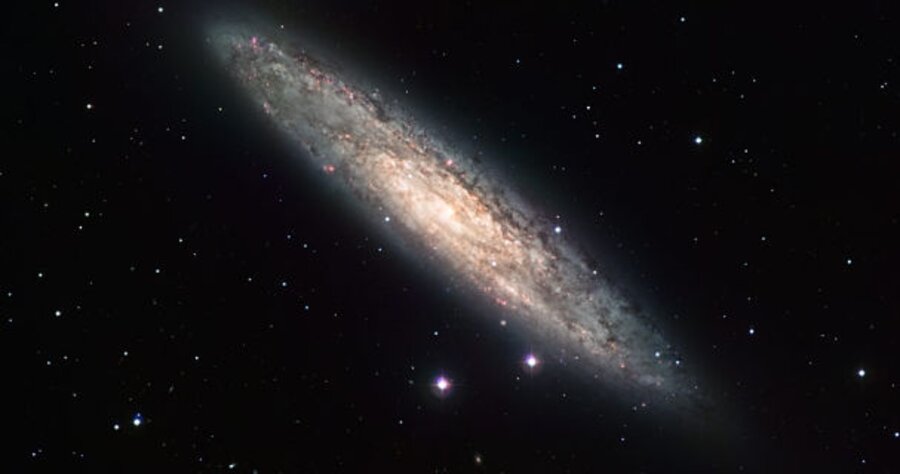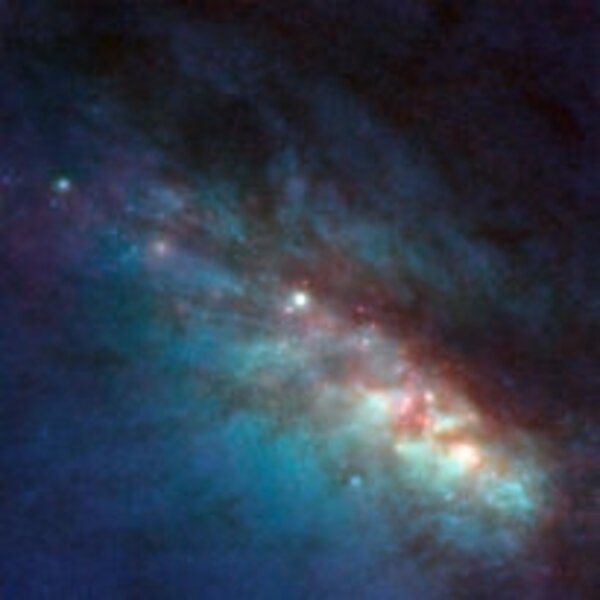From Galileo's moons to galaxies far, far away
Loading...
The International Year of Astronomy 2009 is now underway. It marks, among other things, 400 years since Galileo turned his tiny telescope on the heavens and began a revolution in humanity's understanding of its place in the cosmos.
The first questions were simple: What orbits what in our solar system? What is fixed and what is truly moving? Today astronomers and astrophysicists are using observatories on the ground and in orbit to peer to the very dawn of the universe and answer some of the most fundamental questions about the structure of the cosmos, its origin and future.
Recent results from the European Southern Observatory's Very Large Telescope (VLT) – four mammoth eight-meter "eyes on the sky" on a mountaintop in northern Chile's Atacama Desert – give a tiny taste of how far scientists have come in their ability to observe the heavens and glean its history since Galileo's day.
And the high-tech approaches they are taking are helping to solve a mystery: Why do some galaxies shine far more brightly in infrared radiation than do other galaxies, such as the Milky Way?
Galileo spotted four tiny dots orbiting Jupiter, some 484 million miles away; this ground-based observatory is picking out individual star clusters in a galaxy 12.9 million light years away.
The galaxy is known as NGC 253. Caroline Herschel, wife of the other well-known astronomical Herschel (William), picked it out of the southern sky in 1783 as she hunted for comets.
Astronomers now know it as a "starburst" galaxy – where stars are being born at a faster rate than is typical for a galaxy at this point in the universe's evolution. It also gives off far more of its light in the infrared portion of the electromagnetic spectrum than the Milky Way does. This has earned it a place in the ranks of so-called ultraluminous infrared galaxies.
Deep, deep images of the cosmos taken by the Hubble Space Telescope show what scientists interpret as starburst galaxies in the early universe. But these objects are too far away to study in detail. So astronomers and astrophysicists use galaxies like NGC 253 as stand-ins.
What's turbocharging the emissions?
One question astronomers are trying to answer: What drives these turbocharged infrared emissions? Scientists have a couple of theories. The emissions could erupt as material falls into a supermassive black hole at the galaxy's core, with heavy dust clouds ensuring the emissions appear to us only as infrared radiation. Or the emissions could be coming from young massive stars hidden in the dust. Or it could be a bit of both.
In NGC 253's case, the VLT picked up roughly 37 glowing knots of light in the infrared spectrum. They sit fairly close to the galaxy's core – nearly 1,000 light years from its center. (It's 60,000 to 70,000 light years across.)
The VLT can spot these features at a level of detail similar to the high level of detail achieved by far-flung radiotelescopes when their antennas are linked together as an interferometer. By combining the VLT's optical observations with radio observations, the team concluded that eight of knots were clusters of massive young stars ready to emerge from the dusty nurseries that surround them.
Radiotelescopes have scanned NGC 253 and found evidence of an enormous black hole at its center with a mass some seven million times greater than that of our sun. The VLT observations, however, show that the black hole has no signature in visible light, or at near- or mid-infrared wavelengths. Thus, the team concludes, NGC 253 has a sleeping giant – a dormant black hole – at its core (as does the Milky Way), rather than an active one.
If that's the case, its ultraluminous nature must stem from the large number of young stars blazing amid the copious clouds of dust. The results are summarized here and appear formally here.
Galileo would be stroking his beard with delight.
No single post can span the broad spectrum of cool images astronomers are pulling in from their ever-more powerful telescopes. If you have a favorite image, share a link in the comments section. If the muse speaks, feel free to include a comment or two on why the image caught your fancy.






